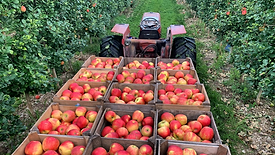Home » Keywords: » sanitizers
Items Tagged with 'sanitizers'
ARTICLES
The need remains for a continuous means of sanitizing and disinfecting high-touch and other environmental surfaces where persistent microbial pathogens can be found
Read More
Into the Wee Hours, Sanitation and Safety Keep Working Side by Side
Without improved controls, operational efficiencies used to reduce sanitation time will result in a higher risk to both food and worker safety
Read More
The Rise of Antimicrobial Coatings Usage and Standards
A renewed interest in the use of antimicrobial coatings in the food sector has been observed with the COVID-19 pandemic
February 22, 2022
Never miss the latest news and trends driving the food safety industry
eNewsletter | Website | eMagazine
JOIN TODAY!Copyright ©2025. All Rights Reserved BNP Media.
Design, CMS, Hosting & Web Development :: ePublishing







.jpg?height=168&t=1663690258&width=275)





